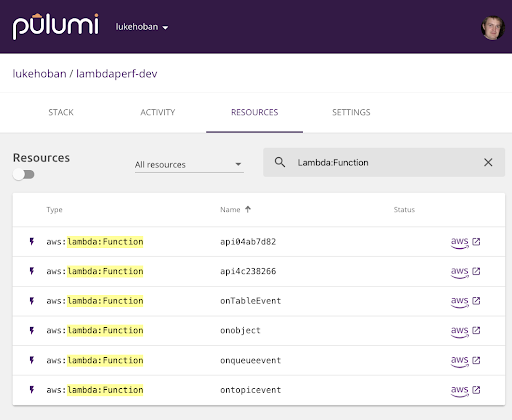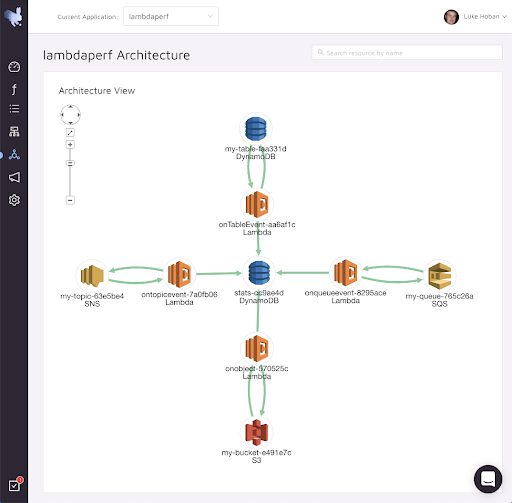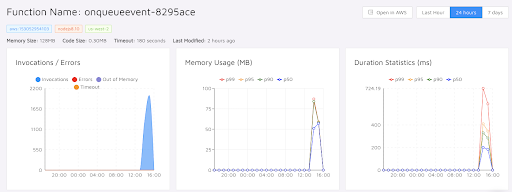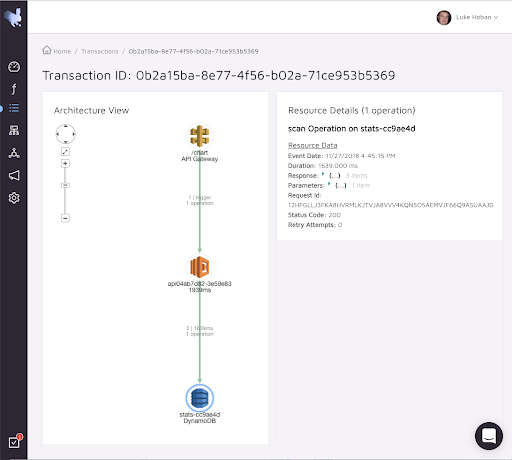Epsagon: Define, Deploy and Monitor Serverless Applications
Posted on
Pulumi makes it incredibly easy to use serverless functions within your cloud infrastructure and applications - an AWS Lambda is as simple as writing a JavaScript lambda!
const bucket = new aws.s3.Bucket("my-bucket");
bucket.onObjectCreated("onNewObject", async (ev) => console.log(ev));
By making it so easy to introduce serverless functions into cloud infrastructure, Pulumi programs often incorporate many Lambdas, all wired together as part of a larger set of infrastructure and application code.
Epsagon is a serverless monitoring solution that lets users observe entire serverless applications composed of many functions and other AWS infrastructure, instead of just looking at individual functions one at a time. This is a great fit for Pulumi applications!
Pulumi users can use the
@pulumi/epsagon
package to automatically get the benefits of Epsagon monitoring for all
of the serverless functions defined in their Pulumi applications. By
just adding two lines of code - every AWS Lambda created from a
JavaScript callback (like in the example above) will automatically get
instrumented with
Epsagon’s monitoring library.
const epsagon = require("@pulumi/epsagon");
epsagon.install(pulumi, { appName: "my-example" });
Monitoring a Serverless Pulumi Application
I have a small Pulumi application I used to compare the latency of various Lambda event sources. In about 200 lines of code, it does the following:
- Provisions required infrastructure for various AWS event sources
- Hooks up Lambda event handlers to this infrastructure
- Describes the code to run in those event handlers (using JavaScript callbacks)
- Creates shared infrastructure for storing test results, and uses it inside the event handlers (via a generic test harness)
- Creates and exposes a REST API for kicking off tests and viewing graphs of test results
Each test case looks like this (you can see more details in the README):
// Test for SNS Topic
const topic = new aws.sns.Topic("my-topic");
function sendTopicValue(val: number) {
return (new aws.sdk.SNS()).publish({
TopicArn: topic.arn.get(),
Message: val.toString(),
}).promise();
}
const topicSubscription = topic.onEvent("ontopicevent", (ev, ctx) => {
return harness("sns", Number(ev.Records[0].Sns.Message), sendTopicValue);
});

All up, it creates 6 Lambda functions connected to a variety of event sources.
I add the two lines of code above to add Epsagon, and set a config secret for the Epsagon API token:
pulumi config set –secret epsagon:token <my-epsagon-token>
Then, after kicking off a test using the REST API exposed by my Pulumi application, I go over to the Epsagon console for my project to see what happened. First, I can get a birds-eye view of my overall architecture. This provides a great visualization of how my resources are related at runtime. Each event source triggers a lambda attached to it, which both triggers that same event source again, and also logs to a central datastore that keeps track of statistics.

I can also drill in and see details about each piece of this, and what performance looked like across all of these.

And finally, I can see what chain of events in my infrastructure led to an operation occurring in DynamoDB - in this case, a REST API was handled by a Lambda, which invoked a Table scan.

Conclusion
Together, Pulumi and Epsagon make it easy to build truly serverless applications – not just a single Lambda, but a whole application made up of many small event driven callbacks that run on-demand. Pulumi makes it easy to author and deploy these kinds of architectures, and Epsagon makes it easy to monitor them. Users get an application-centric view across their full serverless application infrastructure.

